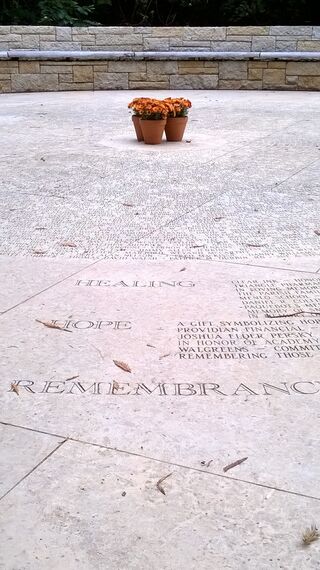Friends
Equity Is Key to Ending HIV/AIDS
Personal Perspective: Believing all are worthy is the foundation of hope.
Posted November 30, 2022 Reviewed by Davia Sills
Key points
- HIV/AIDS tests our belief in the full equality of all people.
- AIDS memorials represent equity and affirm the fully equal value of each life lost.
- Embracing equity is key to preventing new HIV infections by validating each person’s right to live and love freely.
How many December 1 World AIDS Days, AIDS memorial quilt displays, marches, and memorials I’ve attended and participated in over the 41 years since HIV first began striking down gay men, just as I was finally coming out about being gay myself, at age 22, in the summer of 1981.
HIV/AIDS has haunted my entire adult life. It killed far too many of my friends, wrecked a relationship with a man I loved after his own 1986 diagnosis, and broke my heart time after time—including with his death at age 34 only eight years later.
That was all before my own positive HIV test in 2005, three weeks after I turned 47.
I chose to focus on HIV/AIDS as a young journalist after I lost my first two friends while I was still in journalism school in 1985. As an avid consumer of news, I was well aware of the growing pandemic and the increasing toll it was taking in my community. I wanted to do something more than grieve the loss of my friends. It only made sense to me to dedicate my time and talent to chronicling and documenting the experiences of people directly affected by the plague, so that is what I did. My belief in gay people’s fully equal right to love and life and my rejection of the stigma too many (still) attach to HIV drove my commitment and passion for the work.
“Putting Ourselves to the Test: Achieving Equity to End HIV” is the theme of World AIDS Day 2022 (December 1). But really, we have all been put to the test for more than 40 years. The test is the actual measure of our belief in the full equality of all human beings as demonstrated by how we live and treat others and whether we stigmatize those with HIV or accept it as one of the many ways nature and our mortal bodies can betray us. The test is the measure of our resilience, our capacity to bear heavy burdens without breaking.

The memorials created to honor those killed in the AIDS pandemic are clear evidence that those who made them have passed their own tests. They demonstrated their commitment to equity and reflected their resilience in the traditional images of life and “aliveness” they used to commemorate the dearly departed—including trees and flowers and even the all-American patchwork quilt.
A stroll through San Francisco’s AIDS Memorial Grove reveals, in the beautifully landscaped, serene seven acres within Golden Gate Park, a deep ache in the heart of this city’s gentle people. The words “Healing, Hope, Remembrance” are engraved in the granite pavers of the grove’s Circle of Friends.
Yet even here, in this sacred space honoring the memory of the many whose lives have been cut short and the many more uninfected friends and family, still living, who have been forever changed by AIDS, it’s also clear: We want to move on. Life is for the living. On another stone is etched the Yiddish toast “L’Chaim—to Life,” a reminder to live while we are alive.
San Francisco gay activist Cleve Jones pictured an AIDS memorial that would resonate with the American public. He told me in a 1995 interview in San Francisco for my book Victory Deferred: How AIDS Changed Gay Life in America that he got the idea for the AIDS Memorial Quilt when he and others were putting up posters for the annual candlelight march for Harvey Milk, the slain gay leader and elected member of the city’s Board of Supervisors.
Jones wanted something that would provide a visual image of the disease’s toll by showing the lives behind the statistics. During the candlelight march, he asked everyone to carry placards with the name of one person who had died. Using ladders he hid in the shrubbery, Jones and his friends taped the placards on the front of the federal building.
“As I was looking at the patchwork of names on the wall,” said Jones, “I said to myself, it looks like a quilt.” The word evoked warm memories for him because his great-grandmother had sewed a series of quilts to pass on to her grandchildren. An idea was born. Jones recalled thinking, “This is such a warm, comforting, middle-class, middle-American symbol. Every family has a quilt; it makes them think of their grandmothers. That’s what we need: We need all these American grandmothers to want us to live, to be willing to say that our lives are worth defending.”
By adopting a traditional, even archetypal, American folk art to publicly mourn and celebrate the lives of those who have died in the epidemic, the gay people who created the AIDS Memorial Quilt did more than their share for the gay civil rights movement—and to advance equity for all—by showing America the pain, dignity, and humor with which its gay citizens carried the weight of their knowledge of mortality.
According to UNAIDS, an estimated 38.4 million people globally were living with HIV in 2021. Of them, only 28.7 million people are receiving life-saving antiretroviral therapy. In 2021, 1.5 million people became newly infected with HIV, and another 650,000 died from AIDS-related illnesses. Some 84.2 million people have become infected with HIV, and 40.1 million men, women, and children have been killed by the virus since the pandemic was first noted in 1981.
By living as people who have been unalterably changed by our sorrows and by a new awareness of our strength, gay people—survivors—bear daily witness to the transformative power of love and loss. That witness is every bit as “political” as any march and as powerful a testimony as there is of the struggle of gay people for an equal place in the nation where we also live, love, die, and are mourned.
That witness continues to be proof that until all are regarded as fully equal and made to feel they are equally worthy of love, too many—especially young gay men of color—will continue to put themselves in harm’s way and become infected with the virus that has caused so very much suffering and sorrow in the world.




